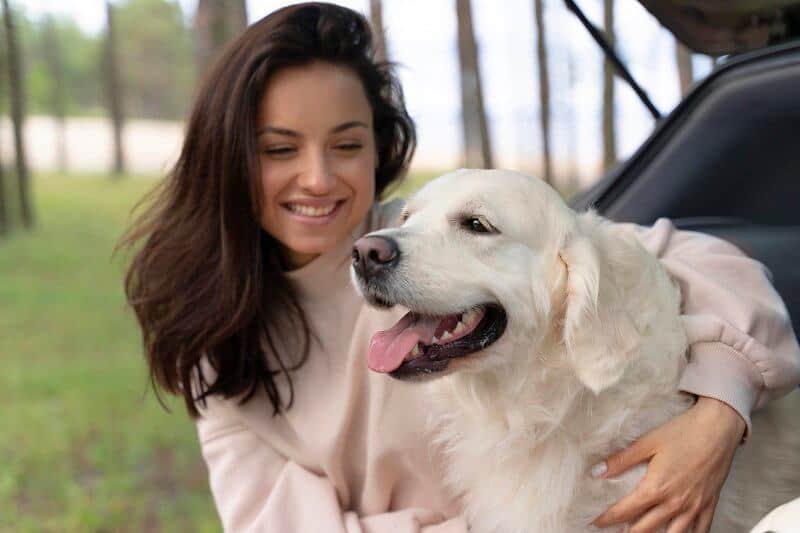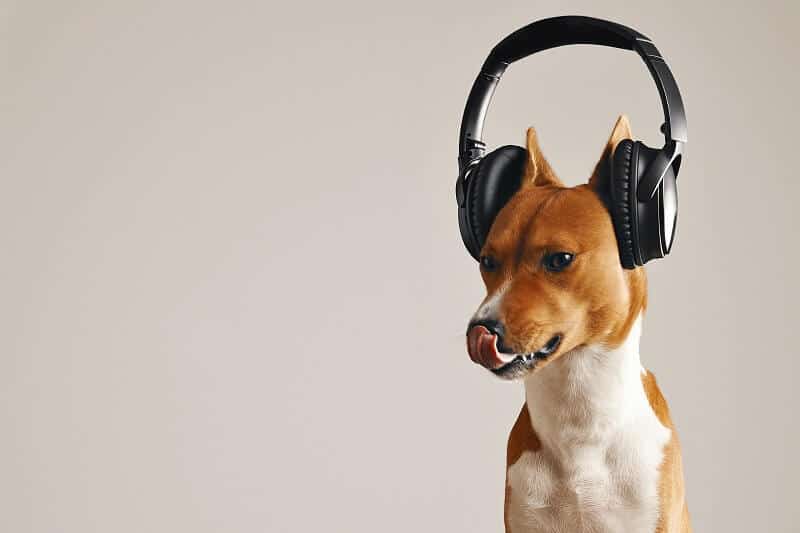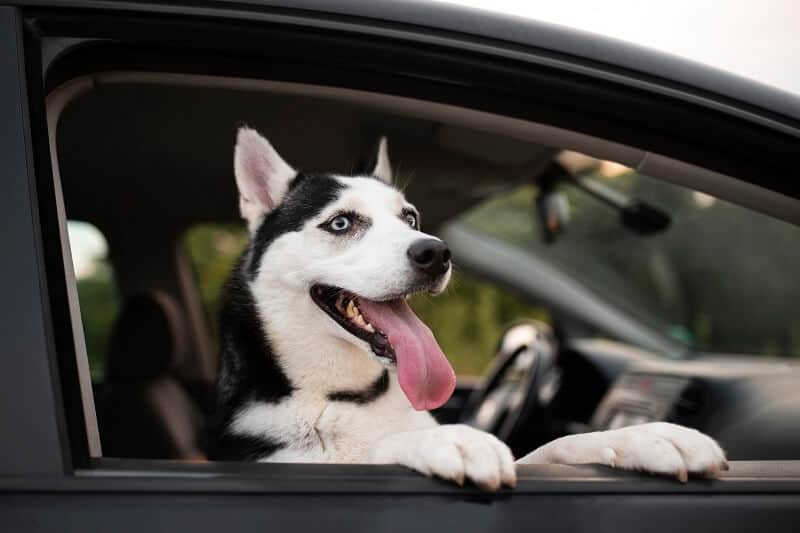A recent study at the University of Helsinki found that out of 13,715 pet dogs of 264 breeds, 72.5 percent showed at least one sign of anxious behavior, according to the Smithsonian Magazine. Like humans, dogs experience stress and anxiety from time to time. Your furry friend might feel anxious due to noise, crowds, change of environment, or fear of heights. Aggression and separation anxiety in dogs is also common, and the worst part is that it’s hard to tell the symptoms. In most cases, your dog will try to tell you they are anxious by tucking their tail, yawning, cowering, trembling, or pushing their ears back. Fortunately, there are many ways you can soothe your pet to help them relax. So, whether your furry friend is anxious by nature or has anxiety due to fear of heights, loud noises, or separation anxiety, here are tips for calming your anxious dog.

Eliminate Factors that Trigger Your Dog’s Anxiety
The first step to help your dog overcome anxiety is know when they are anxious. Start by identifying factors that cause your dog’s anxiety. Next, write down behaviors your dog exhibits when they are nervous about a situation. It also helps to describe the circumstances when your dog shows signs of anxiety. For instance, let’s say you’re outdoors in a crowded park and notice that your dog drooling, barking excessively, or cowering. These behaviors could be signs that your furry friend is afraid of crowds. If that’s the case, try avoiding crowded places, and monitor your dog to see if their anxiety levels reduce. If heights trigger your dog’s anxiety, try to avoid high areas when you’re walking or hiking with your furry friend. Nonetheless, consult your vet before applying this tactic. You want to rule out underlying health conditions and ensure you choose the best treatment for your dog’s anxiety.
Make Sure Your Pooch Gets Enough Exercise
Exercising is an excellent remedy for anxiety, not just for humans but also for dogs. Ideally, getting your furry friend outside and exercising together can help them feel less anxious. That’s because physical exercises trigger the release of endorphins that boost positive mood and balance hormones. Since anxiety causes excess energy to build up, going for a long walk or playing ball with your dog can help tire them out, forcing them to relax. Exercising together with your pet also creates room for bonding, which is ideal for soothing them if they struggle with separation anxiety.

Consider Music Therapy
There’s something about music that helps calm nerves in humans and different animal species, including dogs. With this in mind, try playing soothing music in the house even when you’re leaving for work or school. You’ll notice that your dog feels more comfortable and less anxious about your absence when listening to a relaxing soundtrack. That’s because music blocks street noise or other scary sounds that cause noise sensitivity, making your pet feel anxious. But before you can play any playlist, find out which type of music dogs like. According to research findings published in the Physiology and Behavior journal, dogs feel calm when listening to soft rock and reggae. It’s worth noting that dogs get familiar with background noise after seven days, and that makes them feel stressed and anxious. So, make sure your dog’s playlist has a variety of music options to keep them calm.
Reconsider Your Routine
Before investing hundreds of dollars on any product that guarantees to ease your dog’s stress, evaluate your routine. Typically, a schedule keeps you on track, but a routine gives you a sense of security. The same is true for your dog. For example, a predictable schedule helps your dog know when it’s time to eat, sleep, go outside to play, or walk. As a result, they feel more confident and less nervous. Without a predictable daily routine, your pet will feel anxious because they are unsure of what activities to engage in throughout the day. Therefore, consider creating a schedule for your dog and make an effort to stick to it.
Physical Touch
While there’s not much research on the effects of physical touch on dogs, cuddling on the couch or gentle petting can help your pet stay calm. After all, there is nothing quite soothing to a pet than the warm and loving touch of its owner. Try to figure out the signs of anxiety in your dog and prevent them from getting too anxious by petting them. Anxiety symptoms can range from barking and howling to destroying furniture, decreased appetite, and excessive chewing or licking. Whenever you notice these signs, make sure to cuddle your furry friend or give them a 10-15 minute grooming session. Brushing your dog for a few minutes makes them feel refreshed and creates more time for them to bond with you. You also get the chance to check if your furry friend has lesions, sores, or abrasions on the skin that might make them feel uneasy. If you notice any sores or lesions on your dog’s skin, it’s wise to visit the vet for a thorough checkup. Chances are your dog has been doing self-damage by biting or scratching themselves out of fear or anxiety.

Try Massage
Besides cuddling and petting, consider giving your dog a massage. Massage therapy works wonders because it helps relax tense muscles and joints. To achieve the best outcomes, start massaging your dog from the neck, working downwards with long strokes. It’s wise to keep one hand on the dog while the other one does the massage. Over time you’ll get better at massaging your dog and even identify areas where your furry friend holds most of their stress. That way, you can focus on those specific areas to calm your pet when they are nervous.
Use Positive Reinforcement
If you have a new puppy or senior dog that dislikes the idea of travel, positive reinforcement can help them overcome travel anxiety. This tactic makes getting into the car a fun-filled occasion. For example, you may use tasty treats or your dog’s favorite toys to lure them in the car or praise them. Once the dog is in the car, don’t drive off immediately. Instead, spend some time in the car with them to get familiar with the new environment. After a few days or weeks, the car won’t be an object of fear to your puppy, so you may take a short, gentle road trip because dogs are prone to motion sickness, especially when they are young. But with time you can increase the travel distance. Crate training, giving rewards for good behavior, and using calming supplements, are other great ways to calm your pet’s travel anxiety.

Ensure their Comfort During Car Rides
The type of road trip car you choose will also impact your dog’s well-being during long-distance travel. If your current ride isn’t ideal for road tripping with your four-legged buddy, consider investing in a new one. But with so many cars available for dog owners, choosing the right one can be daunting. Experts recommend settling for a model with a flat cargo area for placing your pet carrier. The ideal vehicle will also have sliding side doors or a low loading floor that allows small and older dogs to climb in and out of the car with ease. Other factors to consider when comparing automobile models and makes at auto shops include automatic climate control, quiet cabin, and backseat camera. Remember, a car with a quiet cabin is ideal for dogs that are prone to noise sensitivity. They are likely to feel nervous when exposed to wind, car, or road noise. On the other hand, having a backseat camera helps you reassure your pet without shouting, which often triggers anxiety.
Help Your Dog Face their Fears
Desensitization or exposure therapy is an effective treatment technique used to help humans overcome phobia and anxiety. You can apply the same concept to help your dog cope with anxiousness. This step entails exposing your pet to situations they fear most. However, you shouldn’t expose them to their fears at once but at low levels. Then increase the exposure gradually until your pet becomes comfortable with the feared situation. You may also combine desensitization with counter-conditioning. This trick involves pairing fearful situations with something your furry friend likes, like their favorite treat.

For example, if your dog shows signs of anxiety around people, start exposing them to humans, but at a distance. You could go to a less crowded park and expose your dog to a man standing beside a tree at a distance. Putting your pet in such a situation while feeding them their delicious treats makes them concerned about the man, but they won’t overreact. Over time, reduce the distance between your dog and people, and repeat the exercise. You’ll be surprised to see your dog become less anxious about being too close to humans.
When people talk about anxiety, they link it to humans only. However, animal species, especially dogs, experience anxiety and stress due to noise, change of surroundings, and separation from their owner. Like humans, dogs exhibit various symptoms when anxious, including excessive urinating, lip licking, cowering, howling, and barking. Luckily, anxiety in dogs is manageable if you help your pet face their fears, follow a strict daily routine, prioritize physical touch, exercise, and play music.


